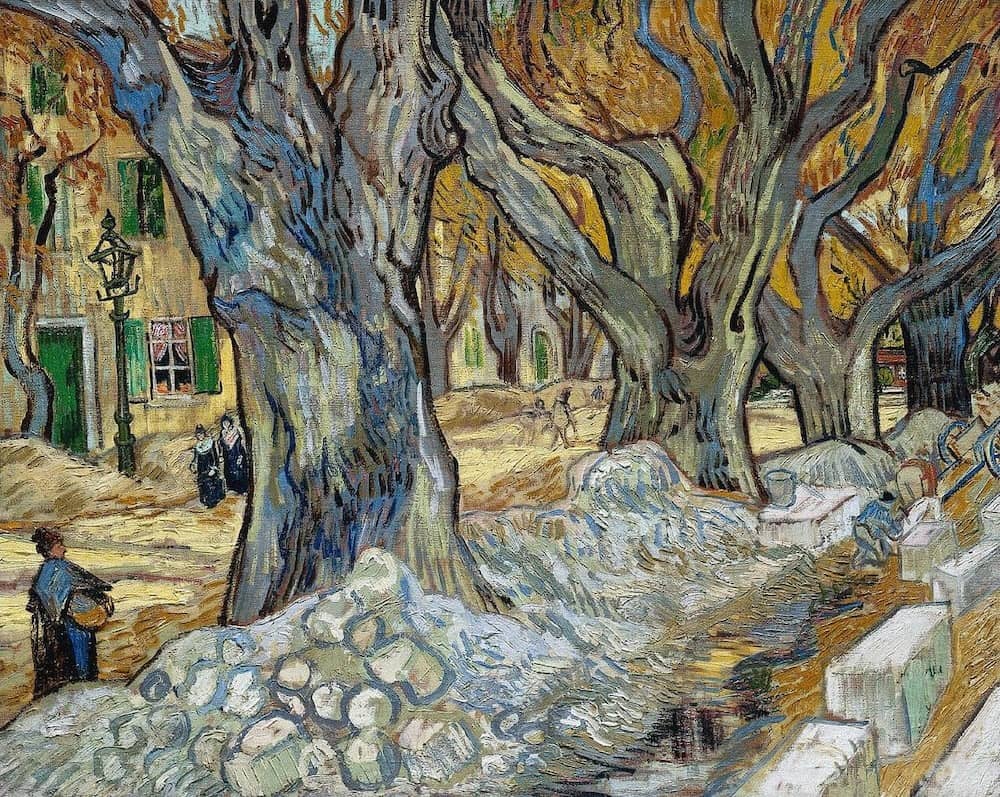Road Works at Saint-Remy, 1889 by Vincent Van Gogh

The asylum at Saint-Remy was run by Dr. Peyron, a former physician of the Navy, who appears to have been of minimal help medically to Van Gogh. The artist had formed a close relationship with an intern at the hospital in Arles, Or Felix Rey, and had also been friendly with the pastor in Arles, Reverend Soles, but on arrival at Saint-Remy he found himself isolated from any form of warm contact. He was unable to relate, intellectually or personally to the staff at the asylum, and this increased his sense of isolation.
Though the asylum offered him a framework for his life, removing the pressures of daily living, providing his meals and a network of supervisors, he was without friends. His paintings, that were always a reflection of the artist himself, for the most part became subdued in tone, as seen in this painting made in the winter of November 1889, The overall yellow tonality pervading every aspect of the composition lends the whole a disquieting, sulfurous feel, while the dark outlined trees block the natural view into the scene and appear surreal. Similar subject matter and theme also appears in another painting of the same time: The Road Menders.




















